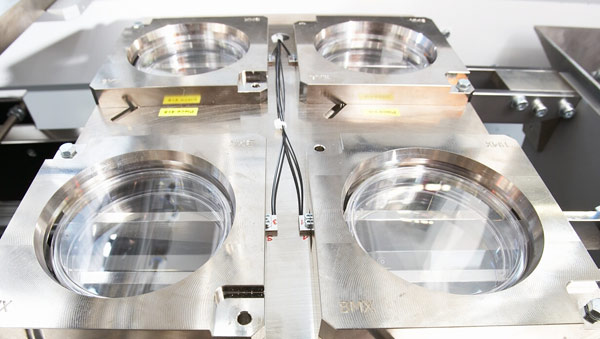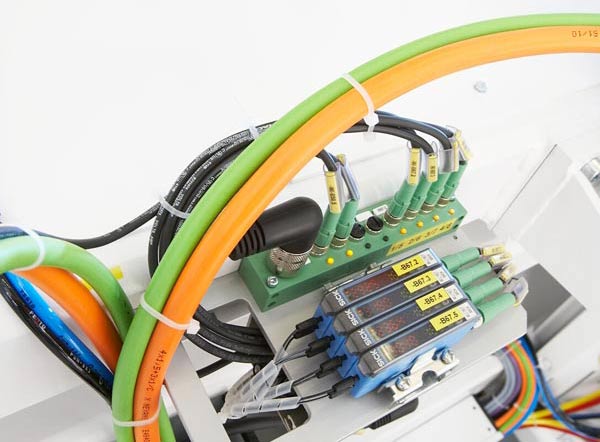Petri dishes are flat, round, transparent and fragile. Hekuma, a specialist in peripheral automation for injection molding machines, knows the secret of reliable detection: the WLL180T range of fiber-optic sensors from SICK.

Petri dishes, named for German bacteriologist Julius Richard Petri, are flat, round, transparent, lidded dishes used in biological, medical and chemical laboratories. Today, most laboratories only use disposable plastic versions. These are manufactured on injection molding machines with built-in high-performance Hekuma automation systems for removing, processing, assembling, labeling, checking and packing the products. "Since the company was founded more than 35 years ago, we have supplied over 5,000 systems to companies in the medical, automotive, packaging and consumer goods industries," says Klaus Wanner, Hekuma's Sales and Marketing Manager.
High throughput requires 100 % reliability
Hekuma's Petri dish systems gently remove the dishes and lids from the molding machine, position them in the cavities of a transfer plate, place the lids on top of the dishes, then stack the units and package them in flow packs. "The whole process is completely automated," Wanner explains. "Depending on the machine setup, we can process and pack over 250,000 Petri dishes per day in a two-shift pattern." The photoelectric sensors must not allow a single error - which is why Hekuma uses WLL180T fiber-optic sensors from SICK.

WLL180T fiber-optic sensors: reliable and easy to integrate
The WLL180T series offers a teach-in function, short response times, swiveling display and a range of fibers for different applications. The sensors are among the most reliable and easily integrated fiber-optic photoelectric sensors on the market. But crucially, they also offer bus technology and special signal processing technology for highly reflective and transparent objects. "The bus technology makes the sensors quicker and cheaper to integrate, because they are simply plugged into each other and less wiring is required," says Wanner. This also makes the system quicker to commission: "We teach one sensor and can then copy the switching threshold setting to all other sensors on the bus network." In addition, the very high-resolution signal processing technology detects even the slightest reduction in the received light to ensure reliable detection of the Petri dishes. The optic fibers, whose minuscule heads have a wide field of vision, also contribute to the accuracy and reliability of the WLL180T.
SICK: the sensor standard at Hekuma
The automation standard in Hekuma's end-customer solutions also includes other SICK sensors, for example the C4000 safety light curtain, the Flexi Soft safety controller, and various product families of photoelectric sensors such as the W2 and W4. The WTB4S-3 sensors, for example, are used in film dispensers in the Petri dish systems. The sensors detect the end of the flow pack film on the roll and any tears.The WLL180T is the ideal detection solution for transparent materials in restricted spaces - not only with Hekuma.


